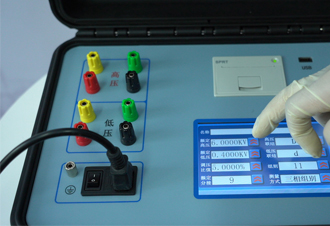 English
English



-
 Afrikaans
Afrikaans -
 Albanian
Albanian -
 Amharic
Amharic -
 Arabic
Arabic -
 Armenian
Armenian -
 Azerbaijani
Azerbaijani -
 Basque
Basque -
 Belarusian
Belarusian -
 Bengali
Bengali -
 Bosnian
Bosnian -
 Bulgarian
Bulgarian -
 Catalan
Catalan -
 Cebuano
Cebuano -
 China
China -
 China (Taiwan)
China (Taiwan) -
 Corsican
Corsican -
 Croatian
Croatian -
 Czech
Czech -
 Danish
Danish -
 Dutch
Dutch -
 English
English -
 Esperanto
Esperanto -
 Estonian
Estonian -
 Finnish
Finnish -
 French
French -
 Frisian
Frisian -
 Galician
Galician -
 Georgian
Georgian -
 German
German -
 Greek
Greek -
 Gujarati
Gujarati -
 Haitian Creole
Haitian Creole -
 hausa
hausa -
 hawaiian
hawaiian -
 Hebrew
Hebrew -
 Hindi
Hindi -
 Miao
Miao -
 Hungarian
Hungarian -
 Icelandic
Icelandic -
 igbo
igbo -
 Indonesian
Indonesian -
 irish
irish -
 Italian
Italian -
 Japanese
Japanese -
 Javanese
Javanese -
 Kannada
Kannada -
 kazakh
kazakh -
 Khmer
Khmer -
 Rwandese
Rwandese -
 Korean
Korean -
 Kurdish
Kurdish -
 Kyrgyz
Kyrgyz -
 Lao
Lao -
 Latin
Latin -
 Latvian
Latvian -
 Lithuanian
Lithuanian -
 Luxembourgish
Luxembourgish -
 Macedonian
Macedonian -
 Malgashi
Malgashi -
 Malay
Malay -
 Malayalam
Malayalam -
 Maltese
Maltese -
 Maori
Maori -
 Marathi
Marathi -
 Mongolian
Mongolian -
 Myanmar
Myanmar -
 Nepali
Nepali -
 Norwegian
Norwegian -
 Norwegian
Norwegian -
 Occitan
Occitan -
 Pashto
Pashto -
 Persian
Persian -
 Polish
Polish -
 Portuguese
Portuguese -
 Punjabi
Punjabi -
 Romanian
Romanian -
 Russian
Russian -
 Samoan
Samoan -
 Scottish Gaelic
Scottish Gaelic -
 Serbian
Serbian -
 Sesotho
Sesotho -
 Shona
Shona -
 Sindhi
Sindhi -
 Sinhala
Sinhala -
 Slovak
Slovak -
 Slovenian
Slovenian -
 Somali
Somali -
 Spanish
Spanish -
 Sundanese
Sundanese -
 Swahili
Swahili -
 Swedish
Swedish -
 Tagalog
Tagalog -
 Tajik
Tajik -
 Tamil
Tamil -
 Tatar
Tatar -
 Telugu
Telugu -
 Thai
Thai -
 Turkish
Turkish -
 Turkmen
Turkmen -
 Ukrainian
Ukrainian -
 Urdu
Urdu -
 Uighur
Uighur -
 Uzbek
Uzbek -
 Vietnamese
Vietnamese -
 Welsh
Welsh -
 Bantu
Bantu -
 Yiddish
Yiddish -
 Yoruba
Yoruba -
 Zulu
Zulu
closed cup flash point
Understanding Closed Cup Flash Point Importance and Applications
The closed cup flash point is a critical safety parameter in the handling and storage of flammable liquids. This measurement indicates the lowest temperature at which a liquid can vaporize to form an ignitable mixture in air, when measured in a closed environment. It plays a crucial role in determining the safe use, transportation, and storage of hazardous materials.
In essence, the closed cup flash point is obtained using a specialized device called a closed cup tester. In this apparatus, a sample of the liquid is placed in a sealed container, and a heat source is applied. An ignition source, typically a small flame, is introduced intermittently at specified temperature intervals. The lowest temperature at which a visible flash occurs is recorded as the flash point. This method is considered more accurate than the open cup method, as the closed environment prevents the escape of volatile vapors, offering a more realistic assessment of the liquid's flammability.
The significance of the closed cup flash point cannot be overstated. Regulatory bodies across the globe, such as the Occupational Safety and Health Administration (OSHA) in the United States and the European Chemicals Agency (ECHA), set guidelines that mandate the measurement of flash points for various chemicals. These guidelines aid in determining the appropriate classification of substances, ensuring that manufacturers and handlers adhere to safe practices. For instance, materials with a flash point below 60°C (140°F) are classified as flammable, requiring stringent safety measures during their use and storage.
closed cup flash point

A low flash point can indicate a higher risk factor, making it vital for industries that deal with chemicals, such as paint, coatings, and solvents, to understand and monitor these properties. In the oil and gas sector, for instance, the flash point is a key indicator of the volatility of crude oil and its derivatives. Understanding the flash point assists in assessing the risks associated with transportation, refining, and handling processes, thus enhancing safety protocols and regulatory compliance.
Furthermore, the closed cup flash point is crucial in fire safety and control measures. Knowledge of a material's flash point allows safety professionals to develop effective strategies for fire prevention and mitigation. For example, proper storage conditions for flammable liquids can be established based on their flash point, thereby reducing the likelihood of ignition under various environmental conditions.
In addition to safety considerations, the closed cup flash point has implications in formulation chemistry. Chemists can use this information to optimize products for performance while ensuring they remain within the safety guidelines. This balance is critical in industries such as aerospace, automotive, and manufacturing, where both the efficacy of materials and safety are paramount.
In conclusion, the closed cup flash point is an essential parameter in the field of chemistry and industrial safety. It is not only a fundamental measure for assessing the flammability of liquids but also a vital tool in regulatory compliance, risk assessment, and fire safety management. As industries continue to innovate and evolve, a thorough understanding of the flash point will remain indispensable in promoting safe handling practices and protecting both workers and the environment.
-
Testing Equipment Industry Sees Major Advancements in 2025: Smart & Precision Technologies Lead the WayNewsJun.06,2025
-
Applications of Direct Current Generators in Renewable Energy SystemsNewsJun.05,2025
-
Hipot Tester Calibration and Accuracy GuidelinesNewsJun.05,2025
-
Digital Circuit Breaker Analyzer Features and BenefitsNewsJun.05,2025
-
Benefits of Real-Time Power Quality Monitoring Devices for Industrial EfficiencyNewsJun.05,2025
-
Earth Fault Loop Testing in High-Rise Building Electrical SystemsNewsJun.05,2025



